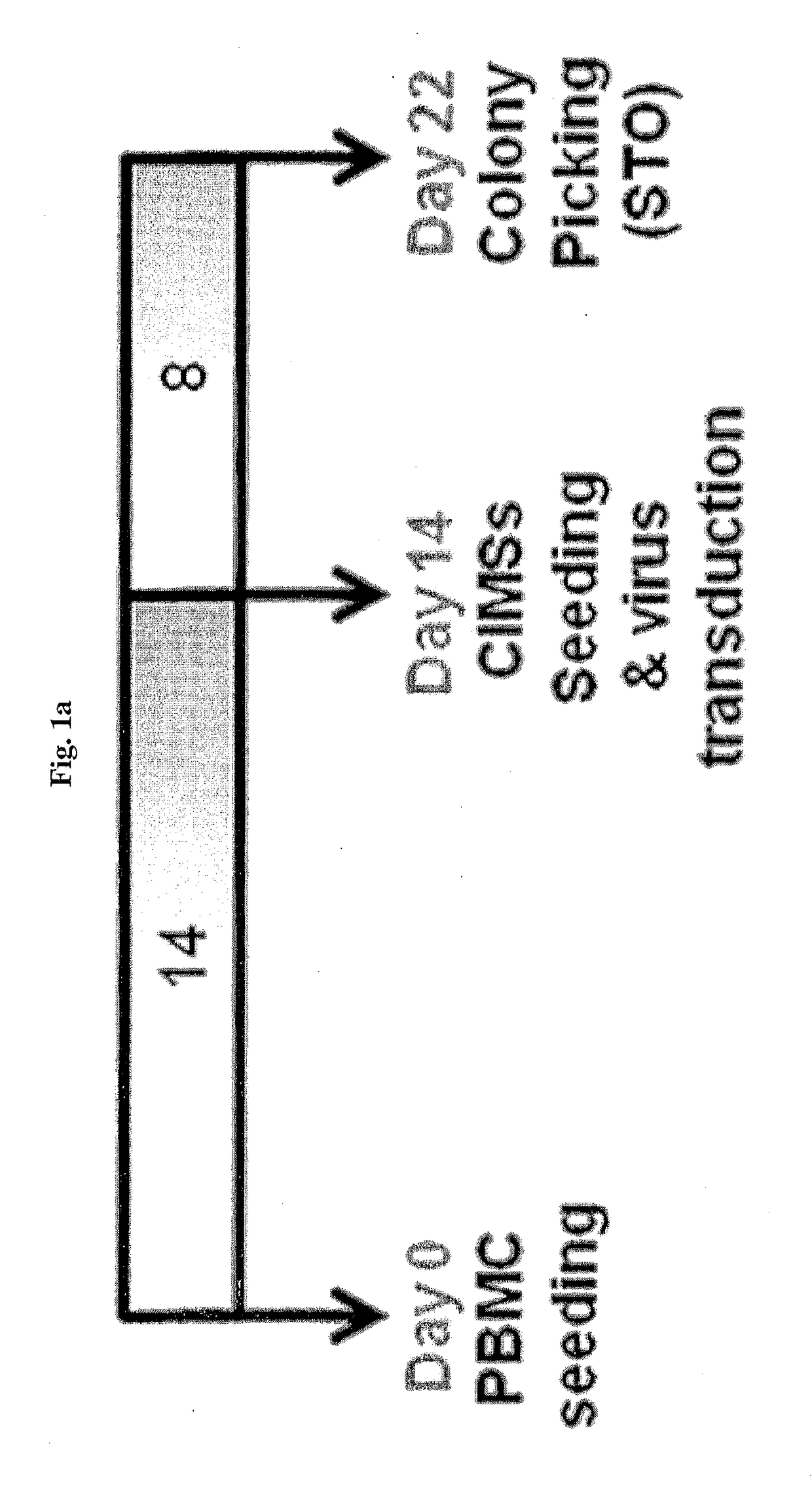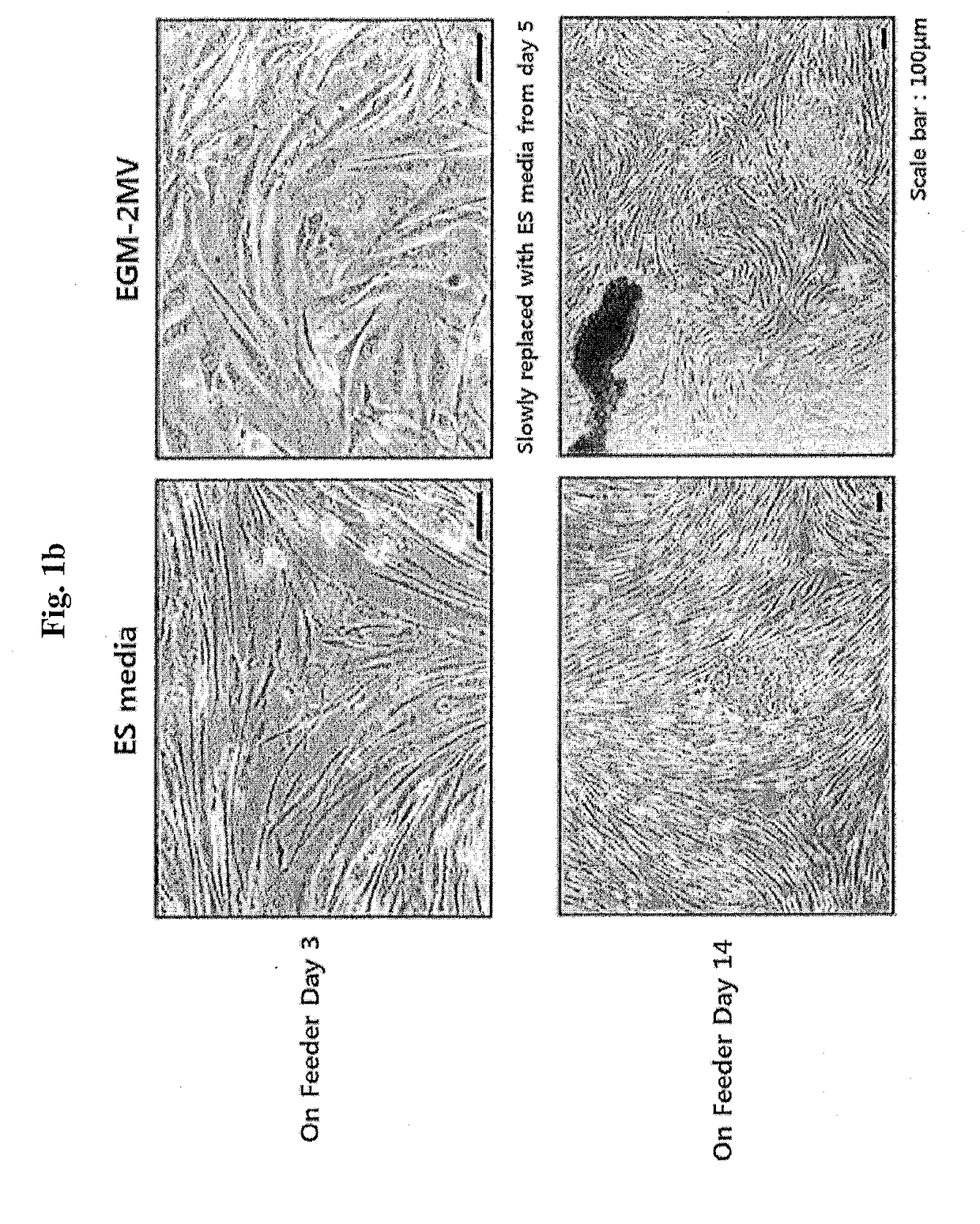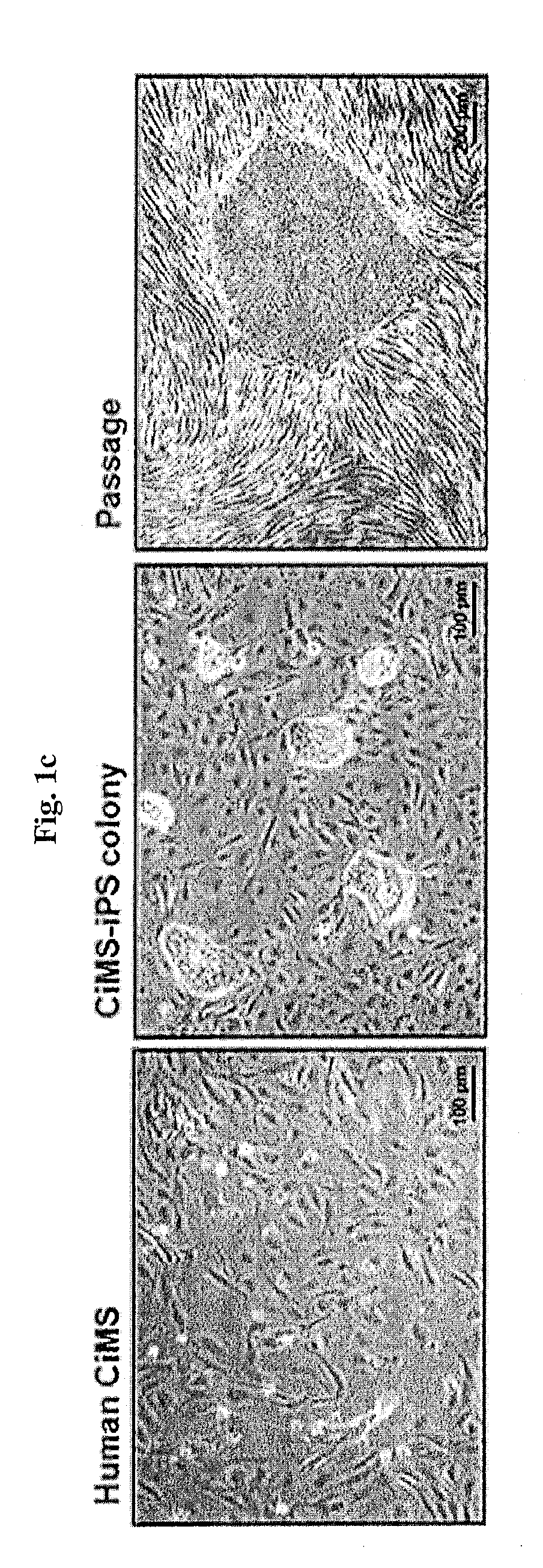Method for differentiating induced pluripotent stem cells, which are prepared from endocardium-derived adult stem cells, into cardiovascular cells, and use thereof
a technology of stem cells and stem cells, which is applied in the field of differentiating induced pluripotent stem cells, can solve the problems of requiring too much labor, time and resources for isolation, culture, storage, etc., and achieves the effects of high proliferative potential, high production efficiency and easy isolation
- Summary
- Abstract
- Description
- Claims
- Application Information
AI Technical Summary
Benefits of technology
Problems solved by technology
Method used
Image
Examples
example 1
CiMS Culturing Using Peripheral Blood
[0124]Peripheral blood mononuclear cells (PBMCs) were separated from human blood using Ficoll-Paque, suspended in an EGM-2MV medium (Lonza; Basel, Switzerland), and distributed into a 6-well plate coated with 10 μg / ml of fibronectin such that each well had 4×106 cells / ml, and then incubated in a 5% CO2 incubator. On the next day, the plate was vigorously shaken several times and floating cells were removed through strong suctioning, and then replacement with a new medium and culturing were repeated for 7 days, and after 7 days, the medium was replaced once every two days. As a result, the appearance of circulating multipotent adult stem cells (CiMSs), which are endocardium-derived adult stem cells, was identified between day 5 and day 8, and the CiMSs proliferated while forming colonies within 2 weeks. These colonies were sub-cultured using 0.05% trypsin / EDTA or suspended in a fetal bovine serum (FBS) stock medium containing 10% dimethyl sulfoxid...
example 2
Production of Induced Pluripotent Stem Cells Using CiMSs
2-1. Retrovirus Production
[0125]A retrovirus expressing each of the four genes, i.e., SOX2, c-MYC, OCT4, and KLF4, which are referred to as Yamanaka factors, was produced to be used for the production of induced pluripotent stem cells.
[0126]For this, 293T cells were cultured in a high glucose DMEM containing 10% FBS and an antibiotic until reaching 90% confluence. Meanwhile, 800 μl of a basal DMEM medium was dispensed into 1.5 ml eppendorf tubes, a plasmid cloned with one of the prepared four genes and packaging vectors, i.e., pVSV-G and pGag-Pol, were added in an amount of 10 μg / plasmid and mixed, 60 μl of a 1 mg / ml polyethyleneimine (PEI) stock was added to each tube and satisfactorily mixed therein, and the resulting mixture was maintained at room temperature for 30 minutes. To increase transfection efficiency, 293T cells were rinsed twice with 5 ml of a basal DMEM, and 10 ml of an antibiotic-free high glucose DMEM (containi...
example 2-2
Production and Culturing of CiMS-derived Induced Pluripotent Stem Cells
[0127]One day before treatment with the retrovirus produced according to Example 2-1, the CiMSs obtained using the method of Example 1 were treated with 0.05% trypsin, separated from a culture container, and distributed into a 6-well plate at a density of 5×105 cells per well, and then the medium was replaced with a 2 ml medium on the following day. 4 hours after medium replacement, the resulting cells were treated with the retrovirus of Example 2-1 and polybrene at a concentration of 10 μg / ml and transduced therewith at 37° C. for 18 hours or more. Subsequently, the medium was replaced with a new EGM-2MV medium, followed by replacement with a medium every day and observation.
[0128]As a result, slow morphological conversion of the CiMSs into epithelial-like cells was seen from about 2 days after transduction, and colony formation was confirmed between day 8 and day 12. While observing the colony with a microscope...
PUM
| Property | Measurement | Unit |
|---|---|---|
| concentration | aaaaa | aaaaa |
| concentration | aaaaa | aaaaa |
| stability | aaaaa | aaaaa |
Abstract
Description
Claims
Application Information
 Login to View More
Login to View More - R&D
- Intellectual Property
- Life Sciences
- Materials
- Tech Scout
- Unparalleled Data Quality
- Higher Quality Content
- 60% Fewer Hallucinations
Browse by: Latest US Patents, China's latest patents, Technical Efficacy Thesaurus, Application Domain, Technology Topic, Popular Technical Reports.
© 2025 PatSnap. All rights reserved.Legal|Privacy policy|Modern Slavery Act Transparency Statement|Sitemap|About US| Contact US: help@patsnap.com



